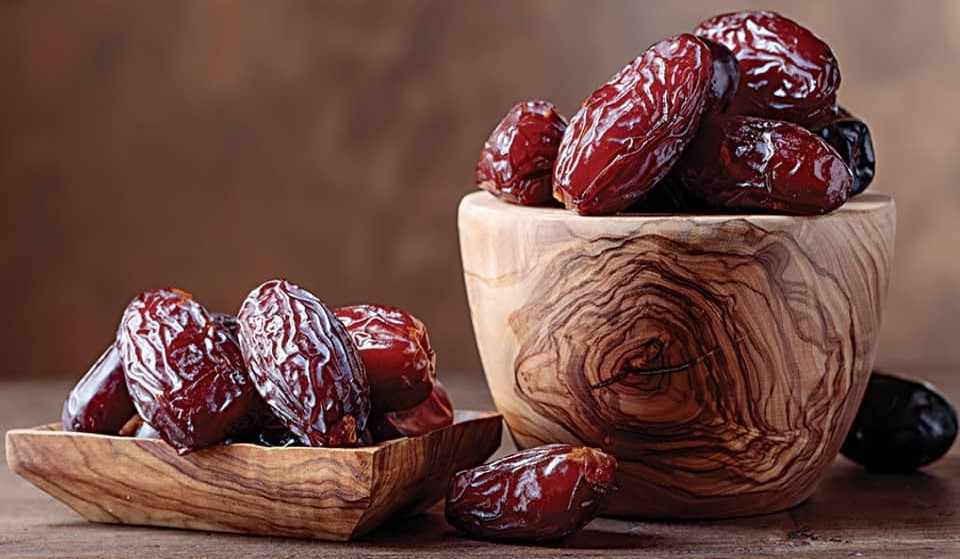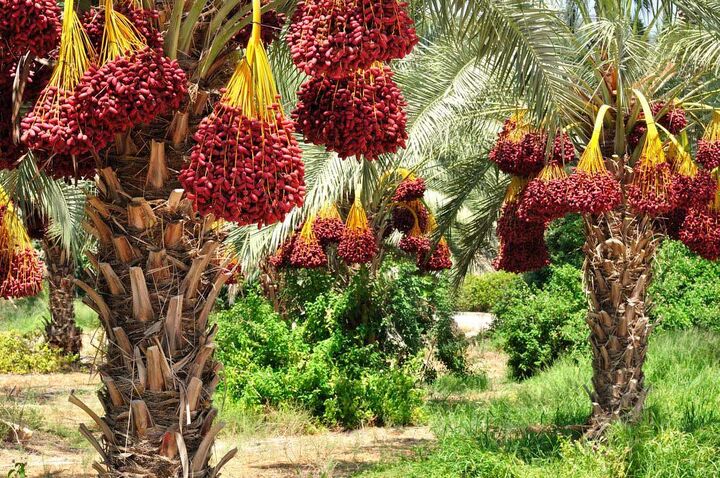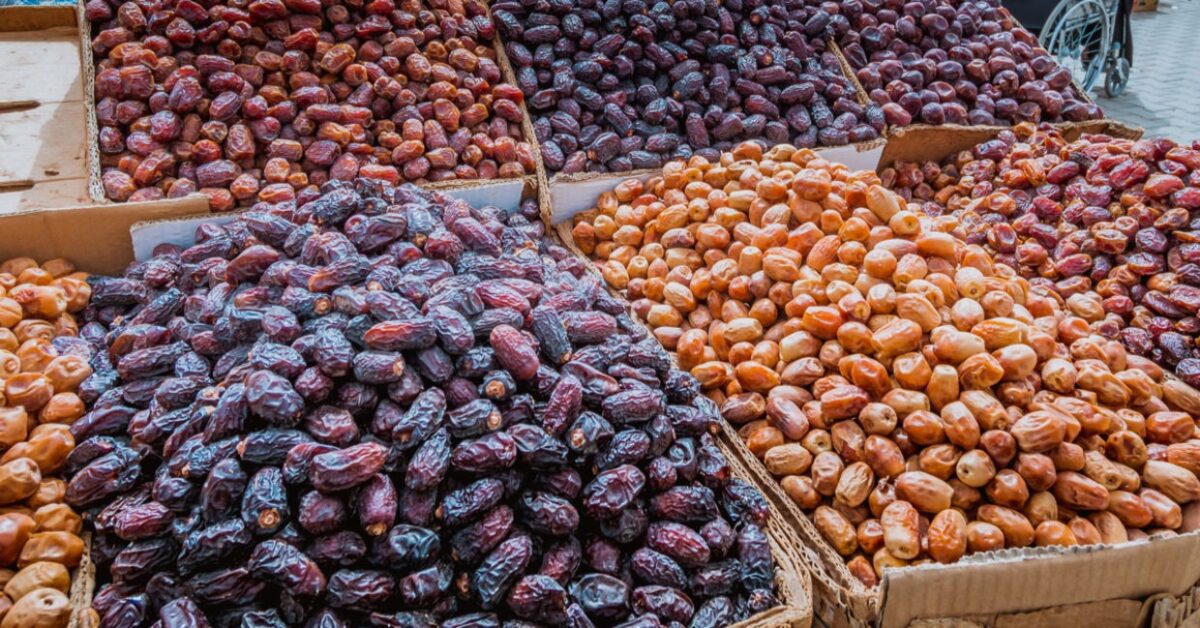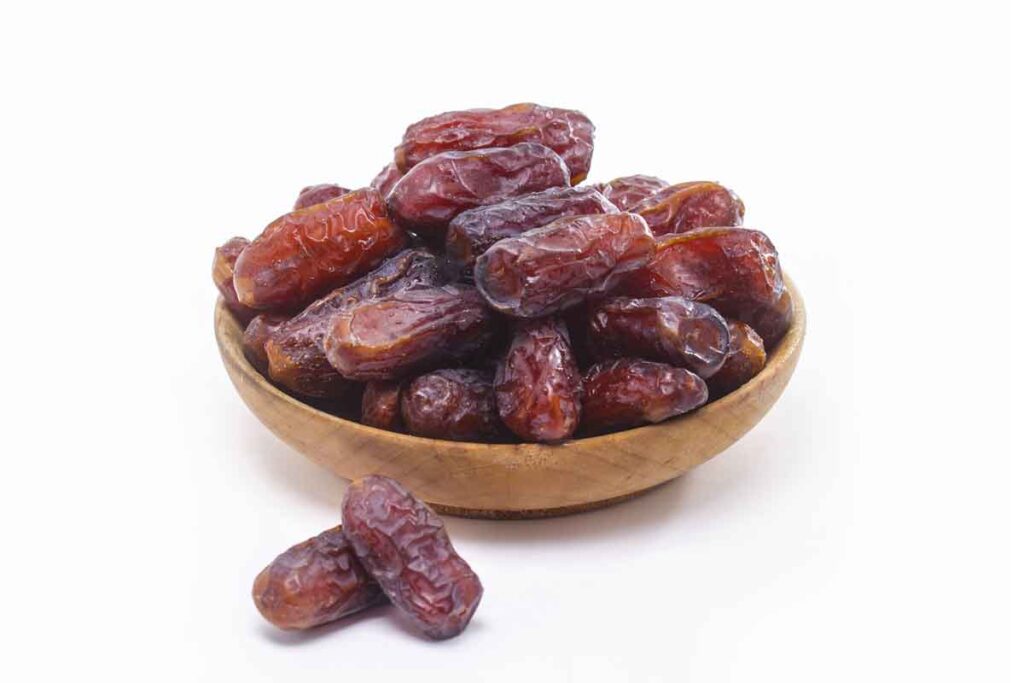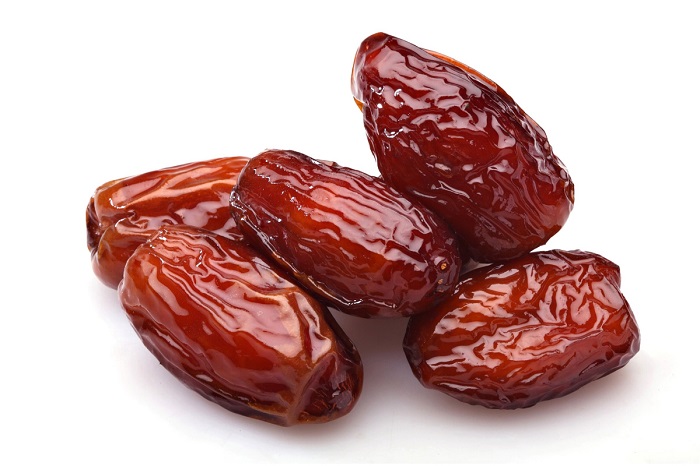Iranian Dates Production: Scope and Specialization
Iran produces over 900,000 tons of dates annually, representing around 7.7% of global exports. With over 400 types cultivated across regions, including Khuzestan, Kerman, Hormozgan, and Sistan-Baluchestan, Iran’s date production emphasizes both variety and volume. Bushehr province is particularly important, producing major varieties like Kabkab and Zahedi, which are extensively exported. Each province has developed a specialization in different varieties, capitalizing on local climate and soil conditions that enhance the distinct taste, texture, and nutritional profile of dates.
Key Varieties and Their Market Niches
Iranian dates are categorized by their moisture content and taste profile, which suit different markets:
- Mazafati Dates: Known for their soft, moist texture, Mazafati dates are typically consumed fresh and are popular in neighboring Gulf countries, which have a preference for softer dates. These dates are often packaged for retail consumption and seen as a premium choice due to their relatively short shelf life and unique taste.
- Kabkab Dates: Widely produced in Bushehr, Kabkab dates are semi-dry, making them versatile for use in snacks and desserts. Around 75% of Bushehr’s date production is Kabkab, indicating strong demand in markets that prefer more resilient dates that can withstand storage and long transport, such as India and the Gulf.
- Piarom Dates: Piarom dates, cultivated primarily in Hormozgan, are considered among the highest quality dates due to their rich, semi-dry texture and longevity. Known as the “chocolate date” for their color and sweetness, Piarom dates are highly sought after in Europe, North America, and affluent Gulf markets where demand for premium dates is high.
- Zahedi Dates: These are among the most popular semi-dry dates for export, especially to the Persian Gulf, Europe, and North Africa. With a distinct yellow-brown hue and firm texture, Zahedi dates are often used in culinary preparations, making them a staple export for Iran.
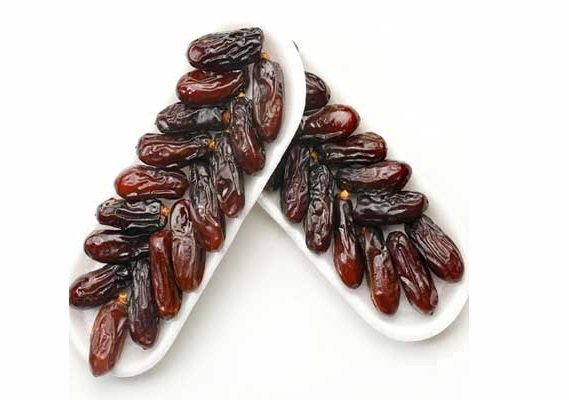
Persian Gulf Market Dynamics
The Persian Gulf nations, notably the UAE, Saudi Arabia, and Kuwait, are among the most significant markets for Iranian dates. This regional demand is largely due to cultural factors: dates hold a special place in Gulf cuisines and are a staple during Ramadan when consumption peaks. Iran’s proximity allows it to maintain a logistical advantage over competitors like the United States and Pakistan, minimizing transportation time and costs. Iran’s ability to meet demand surges, particularly for dates that are difficult to transport over long distances without quality degradation, has been a decisive factor in its sustained market presence in the Gulf.
Export and Trade Challenges
While Iran is well-positioned as a date supplier to the Gulf and international markets, the sector faces some significant challenges:
-
Competition and Pricing Pressure: Iran faces stiff competition from other date-producing nations, notably Saudi Arabia, the United Arab Emirates, and Egypt. Saudi Arabia, in particular, has made extensive investments in expanding its date industry, leveraging its proximity to Gulf markets. Additionally, U.S. and Tunisian dates are popular in markets like Europe and Asia, where they compete with Iranian varieties.
-
Economic Sanctions and Trade Barriers: Economic sanctions have complicated Iran’s ability to trade efficiently. Payment processing, logistics, and access to certain markets can be restricted, causing fluctuations in export volumes and prices.
-
Logistical Constraints and Quality Control: To enhance its competitiveness, Iran has focused on cold storage facilities, especially for varieties like Mazafati that have limited shelf lives. Quality assurance and adhering to international safety standards, such as HACCP and ISO, are becoming more prevalent, as international buyers often prioritize suppliers with certified quality management.
Future Prospects and Growth Opportunities
The Iranian dates industry has strong potential for growth, particularly in regions like East Asia and Europe, where demand for healthy, natural foods is increasing. Expanding into value-added date products, such as date pastes, syrups, and date-based confectioneries, could open new revenue streams and attract health-conscious consumers globally. By improving packaging, enhancing supply chain resilience, and implementing modern agricultural practices, Iran could further strengthen its global market position.
Iran’s focus on premium varieties, especially Piarom and Mazafati, aligns well with global trends favoring organic and high-quality foods. Additionally, with increased investment in logistics infrastructure and a focus on sustainable production practices, Iran’s date industry can continue to thrive and expand its footprint in the Gulf and beyond.
In summary, while facing logistical and competitive challenges, the Iranian date industry remains robust, benefiting from regional demand, product diversity, and quality that resonate in both traditional and emerging markets.
Sources:

